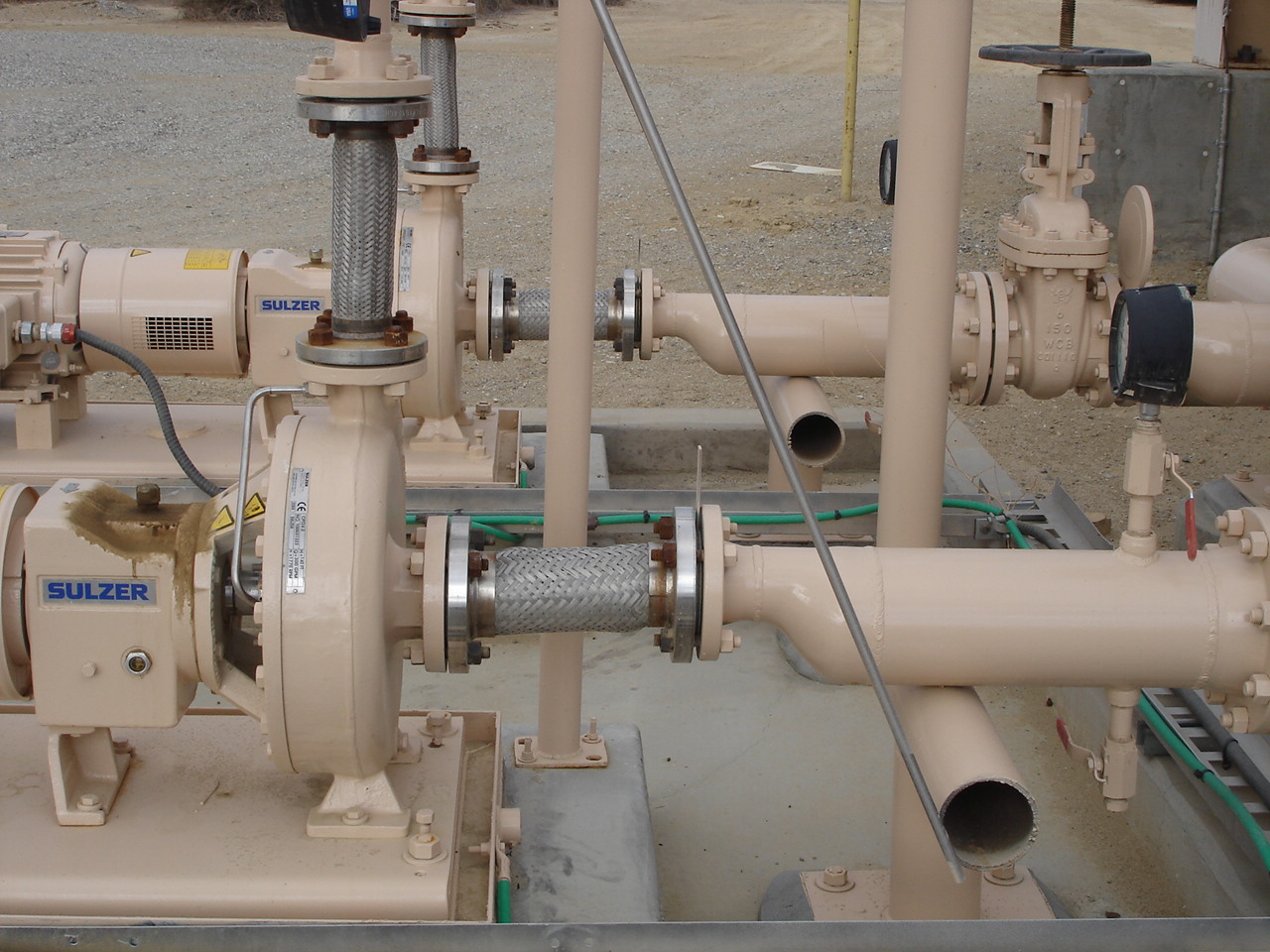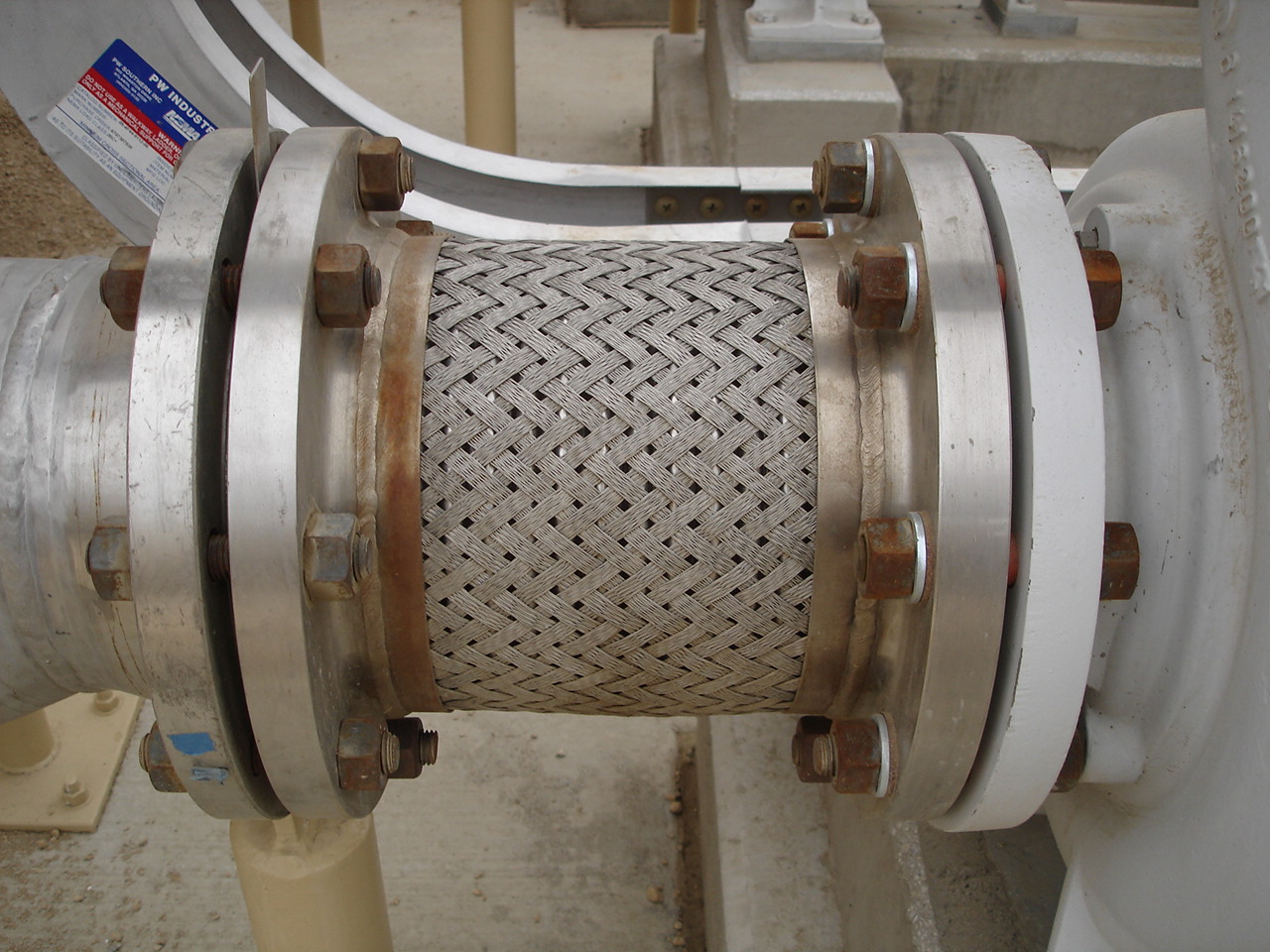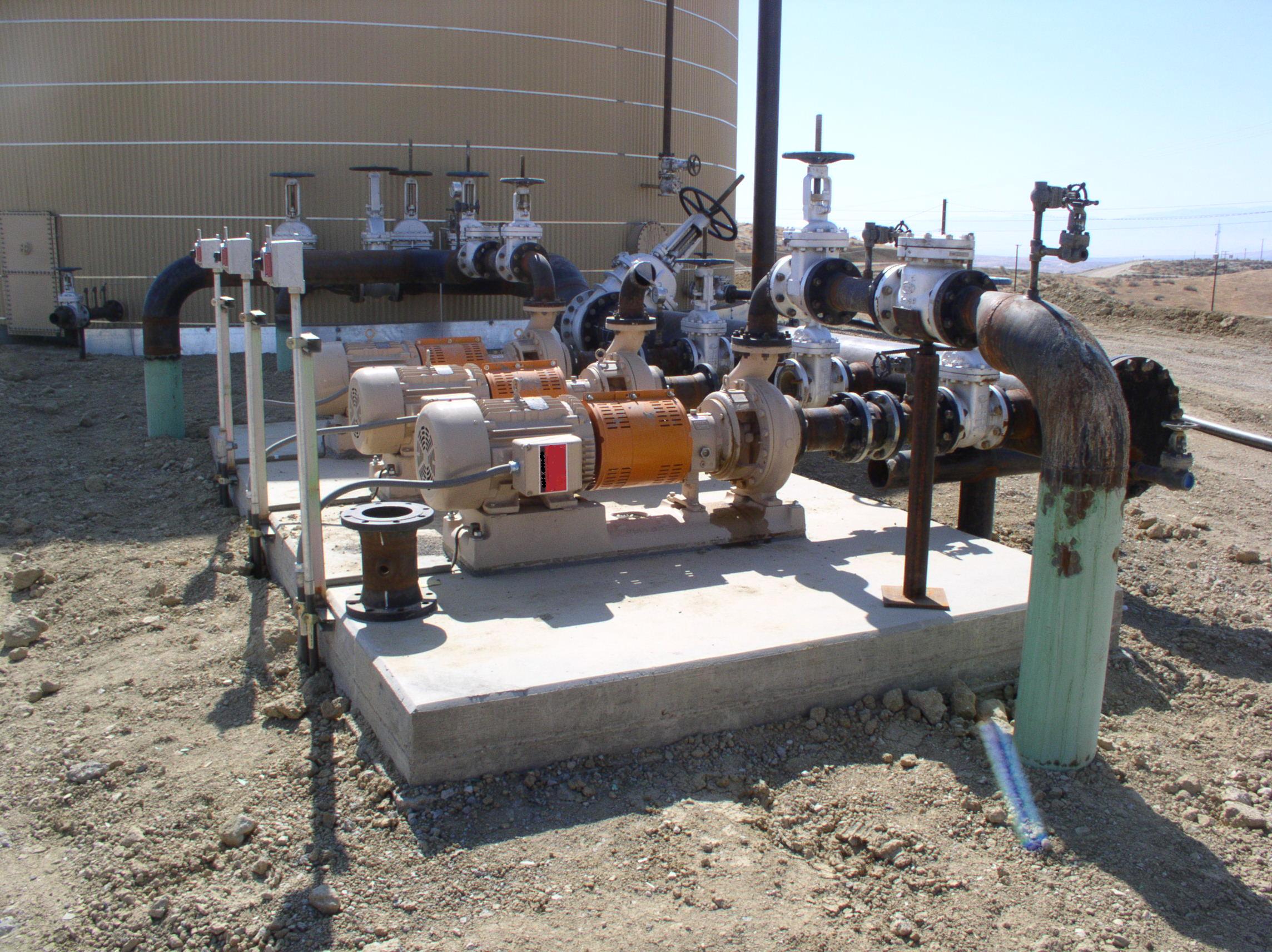Centrifugal Pump Installation
Like any piece of equipment, a centrifugal pump must be installed and maintained properly for trouble free service. This section is concerned only with the installation and placement of the pump. For maintenance points, check out the [[Centrifugal Pump/Maintenance]] section.
The purpose for these instructions is to ensure precise alignment of the pump. If the pump vibrates or is misaligned, catastrophic failure will occur. Note the deliberate use of the word "will" rather than "may."
Inlet & Discharge Piping
One of the most overlooked causes of piping failure is stresses on the face of the inlet and outlet piping due to thermal forces. When a pump is installed, it is leveled, aligned and grouted. After the pump is started up, the alignment isn't always double checked when the materials are at temperature.
To remedy piping forces, expansion components should be used upstream of the pump. An example is a braided stainless steel mesh flex hose on the suction of the pump. (Note: Do not exceed the maximum pressure of the hose!!) This is especially useful if the pump is being field-fit or piping is subject to misalignment.
Suction Connections
The pump suction must be continuously flooded, have 3 diameters of straight run, uses long radius elbows, and can accommodate a temporary in-line strainer.
An eccentric reducer, flat side up, is provided when a pipe reduction is required at the pipe suction. Flanges mating to flat faced pump flanges must also be flat faced and use full-faced gaskets and common.
 Pump Installation Example
Pump Installation Example Pump Suction
Pump Suction Pump Foundation
Pump Foundation
Supports
Piping should be independently supported from the pump. A pipe anchor is provided between a flexible coupling and the pump. '''The connecting flanges should never be used to support the piping!'''
Foundation
The purpose of a cement foundation for a pump is to help dampen the rotational vibration. Generally, the mass of the foundation to provide sufficient stability and damping is three times the weight of the rotating machine. Care should be taken to design a foundation that is wide enough so that it doesn't sink in soft soil.
A common problem with a pump's foundation design is the insufficient extension of the foundation's perimeter beyond the outline of the pump skid. This can cause difficulties in leveling and grouting. Foundation extension three inches beyond the baseplate perimeter is recommended. Care should be taken not to place rebar too closely to the edge of the concrete as spalling can occur. At least two inches of solid concrete should be present before encountering any rebar.
Grouting
After the pump is set on the foundation, it should be grouted. Grout is used to stiffen the baseplate and to provide even load to the foundation. ANSI pumps will have at least a four inch hole in the top of the baseplate for grouting. Typically, grout is normally an epoxy or a cement based grout. When an epoxy grout is used, it should be noted that this will make removing the pump in the future very difficult. A cement based grout is ideal if the pump baseplate is to be moved or replaced in the future. Epoxy is usually more expensive and is less resistant to temperature degradation as well.
However, epoxy grout has a faster set time, has a higher ultimate strength and greater chemical and impact resistance than cement based grouts. It is also easier to place properly and to cure.
Alignment
Pump alignment is extremely important. Most installation and maintenance manuals instruct aligning the pump prior to grouting it, checking the alignment after grout and checking (yet again) following start up.

Tags: Pump

